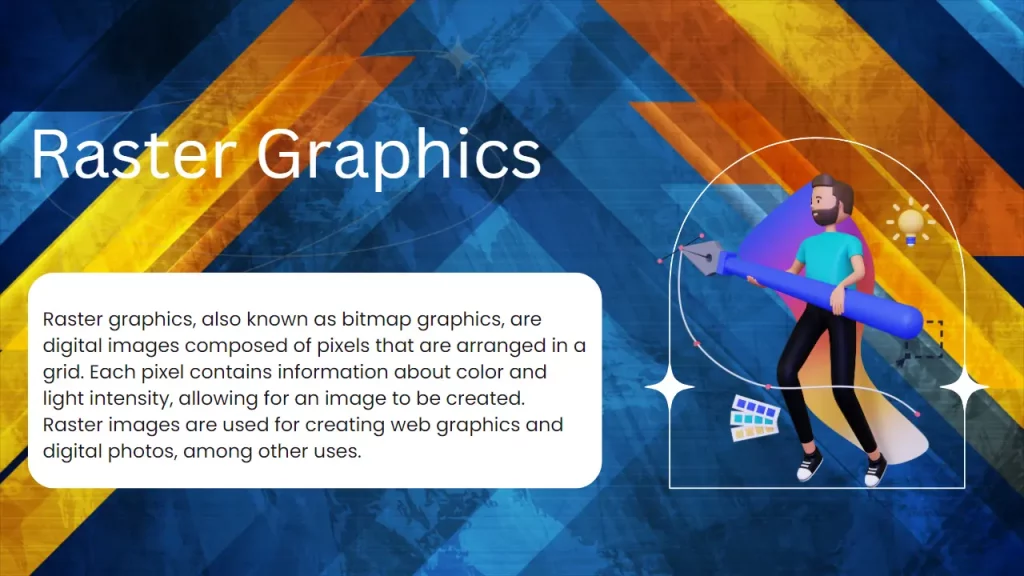If you’re a developer or designer, you’ve probably heard the term “raster graphics” thrown around. But what are raster graphics, and why should you care? In this blog post, we’ll take a look at what raster graphics are and how they differ from other types of graphics.

Table of Contents
Raster Graphics Explained
Raster graphics are a type of digital image file format that is based on a grid of pixels. This means that when you look at a raster graphic, it is composed of small squares called pixels (hence the name). When these pixels are arranged in patterns, they create the image that you see. Examples of raster files include JPGs, GIFs, and PNGs.
Raster graphics are commonly used in web-based pictures and images since they are small and can be easily transmitted over the Internet. Because they are composed of “bitmaps”, raster graphics cannot be enlarged without losing detail. Each pixel also contains a fixed amount of space, so scaling is more difficult than with vector graphics.
Raster graphics are common for digital photographs, as the picture quality is greater when multiple tones are stored for each pixel.
The Benefits of Raster Graphics
Raster graphics have several advantages over other types of digital images:
- Raster graphic images possess an impressive capacity for high-resolution depictions and they never fail to deliver sharp, realistic visuals that impress. When it comes to producing detailed illustrations with intricate textures and minute shades of color, nothing beats raster graphics, which provide the most refined presentation possible. Moreover, their point grid system ensures smooth curves with minimal jaggedness and very impressive results up close.
- Raster graphics enable users to have greater control when it comes to shading and coloring shapes, along with manipulating shadows, texturing, gradients, and more. This is because they offer much more flexibility in terms of color depth than vector files do. Whereas vector files are limited to a lesser amount of colors or tones due to their mathematical nature, raster images can contain a virtually infinite range of possibilities.
- Raster graphics offer creative professionals the perfect tool to create intricate, layered designs that can be used for web design, digital artwork, and more. The ability to create multiple layers in a design is integral in helping to bring a project to life, and raster graphics provide users with this capability. With these sophisticated images and complex designs, you get the power to design exactly what you envisioned – vibrant works of art with unparalleled detail. As such, these types of graphic files are becoming increasingly popular amongst experienced graphic designers who have high expectations for their images.
Limitations of Raster Graphics
Though there are many benefits to using raster graphics, there are some drawbacks as well.
- When it comes to digital graphics, raster formats tend to take up more space than their vector counterparts. This is due to the fundamental difference in how raster and vector images are stored; each individual pixel of a raster image must be saved, resulting in larger file sizes when compared with vector artwork which stores points, paths, and objects. The resolution also affects the size of a raster file; a higher resolution image with more pixels will naturally lead to larger overall files. For these reasons, raster formats are perfect for photographic images but may not be suitable for illustrations or logos because of their increased size.
- While raster graphics offer great visuals, one major drawback is that these images cannot be enlarged without making them blurry, distorted, or pixelated. Vector graphics however have no such issues as they can be resized without any negative consequences on their quality and details. Moreover, vector graphics can also easily rescale up to very high resolutions with virtually no change to the end result. This makes them the ideal choice for anyone looking to include crisp, visually appealing images in their work regardless of the size they will be viewed at.